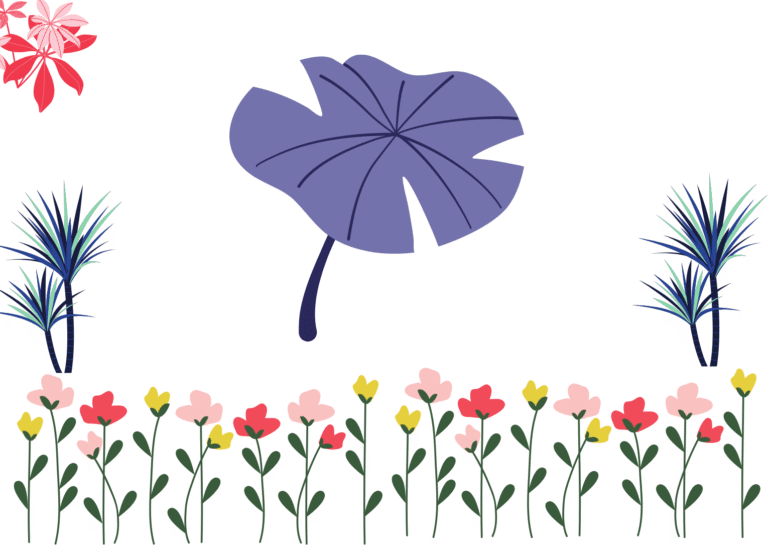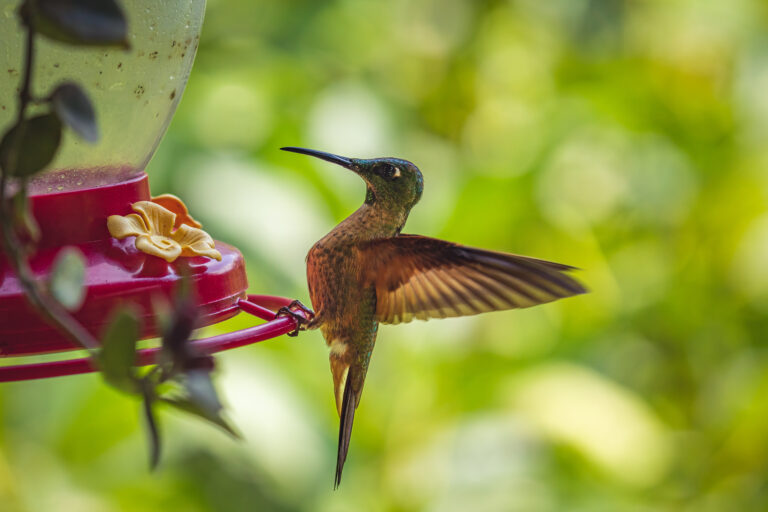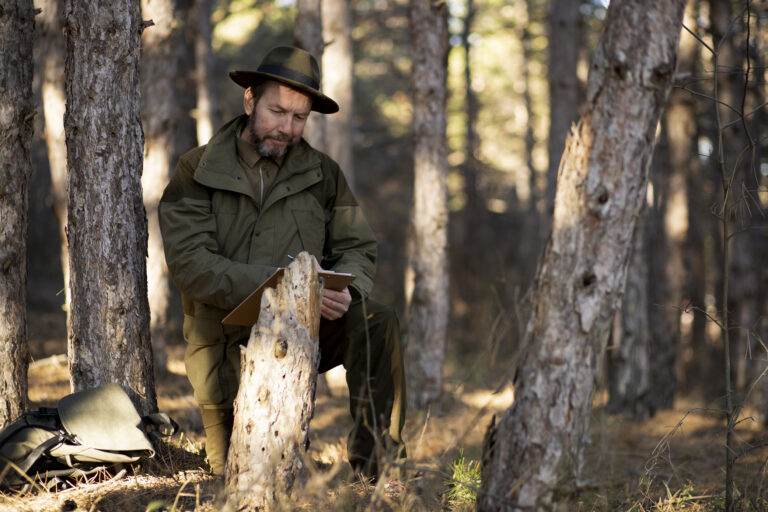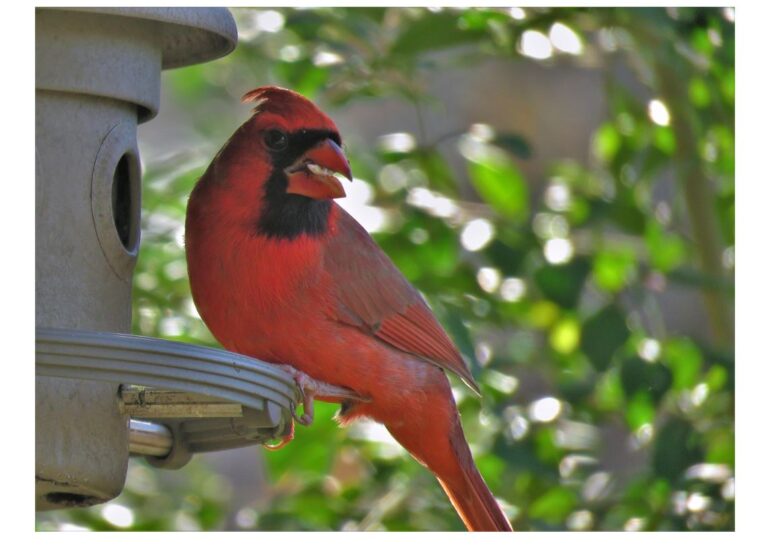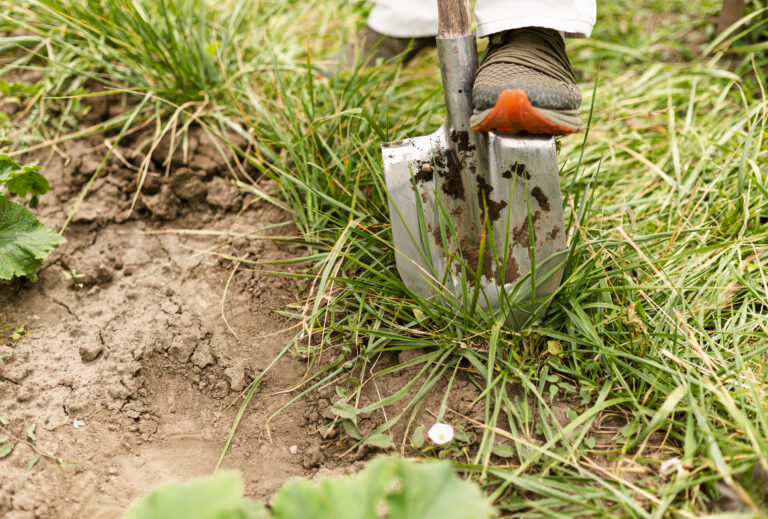10 basic gardening tools for beginners
Starting a garden can be a rewarding and therapeutic experience, but for beginners, choosing the right tools is essential for ensuring a smooth and successful journey.
A well-equipped beginner will have everything they need to tackle basic gardening tasks like planting, weeding, watering, and pruning.
This article highlights the best gardening tools that every beginner should consider for creating a beautiful and healthy garden.
Hori-Hori Knife
The Hori-Hori knife is a multi-purpose tool that has become a favorite among gardeners of all skill levels.
It’s ideal for weeding, planting, cutting, and digging, making it one of the most versatile tools for a beginner.
The knife features a strong, serrated edge that can cut through soil, roots, and small branches with ease.
It also comes with a cord through its handle, making it easy to carry around and attach to your belt for quick access.

Pruner and Trowel
A pruner and trowel are essential for basic gardening tasks. A pruner is perfect for trimming and cutting small branches or dead foliage, helping to maintain the health of your plants.
The trowel, on the other hand, is great for digging small holes, transferring plants, and even mixing soil. These two tools are must-haves for planting, maintaining, and shaping your garden.
Bucket
A bucket is an invaluable tool for collecting clippings, weeds, and garden debris. It helps you keep your gardening area clean and organized, making cleanup much easier.
Whether you’re trimming plants, pulling weeds, or transporting soil, a sturdy bucket will serve multiple purposes and save you time on gardening tasks.

4. Sharpening Tools
Keeping your tools sharp is essential for efficient gardening. Many beginners overlook the importance of maintenance, but having a set of files and file handles will allow you to keep your pruners, trowels, and knives in top condition. Sharp tools are not only safer to use but also make gardening tasks much easier and faster.
| Tool | Purpose |
|---|---|
| Hori-Hori Knife | Weeding, planting, cutting |
| Pruner | Trimming and cutting branches |
| Trowel | Digging and transferring plants |
| Bucket | Collecting clippings and debris |
| Garden Gloves | Protecting hands from dirt and thorns |
| Garden Hose | Watering plants |
| Spade | Digging and turning soil |
| Clipper | Trimming excess plant growth |
Garden Gloves
Your hands are one of your most important tools in gardening, so it’s important to protect them. Garden gloves will shield your hands from thorns, dirt, and other irritants. A good pair of gloves will provide comfort while allowing you to handle plants, tools, and soil with ease.

Garden Hose
A reliable garden hose is a must-have for watering your plants. It ensures that you can reach every corner of your garden and provides a steady flow of water to your plants. Look for hoses that are flexible and durable, with adjustable settings for different water pressures.
Spade, Hand Trowel, Watering Can/Hose, and Clippers
These basic tools are fundamental to most gardening tasks:
- Spade: Ideal for digging and turning over soil.
- Hand Trowel: Perfect for smaller, precise tasks like planting and transferring plants.
- Watering Can or Hose: Essential for providing consistent moisture to your plants.
- Clipper/Trimmer: Useful for keeping your plants neat by trimming excess growth.
Optional – Wheelbarrow
If you plan to work on a larger garden, a wheelbarrow can be extremely helpful. It’s perfect for hauling soil, compost, mulch, and garden waste. A wheelbarrow saves you from making multiple trips and makes transporting heavy items much easier.
Shovel, Snips, Twine, and Bamboo Sticks
These additional tools can help make your gardening experience even smoother:
- Shovel: For digging larger holes and moving soil.
- Snips: Great for fine pruning and trimming.
- Twine and Bamboo Sticks: Useful for supporting tall plants or vines.
Sun Hat and Sunscreen
Spending time in the garden means you’ll be exposed to the sun for long periods. Protect yourself with a sun hat and apply sunscreen to avoid sunburn and skin damage. These items are especially important when gardening during the warmer months.
Garden Bed and Drain Spade
Creating a designated garden bed can help organize your plants and make maintenance easier. A drain spade is recommended for digging in tough soil conditions, like clay, allowing you to break up and loosen the ground for planting.
Leather Gloves
If you plan to handle rough materials or work with tools like a shovel or spade, leather gloves provide added durability and protection. They’re ideal for tasks that may involve sharp or tough materials, such as handling wood, rocks, or thorny plants.
Decent Hoe
A basic hoe is essential for breaking up soil, weeding, and preparing garden beds. It’s especially useful for cultivating the soil before planting and ensuring that your plants have the best environment for growth.
Mini Tiller or Roto Tiller
If you’re working with a larger garden or need to loosen compacted soil, a mini tiller or roto tiller can make the process much easier. These tools are great for breaking up large garden beds and improving soil aeration, making it easier to plant and maintain your garden.
Fertilizers and Supplements
To ensure healthy plant growth, consider using FoxFarm Grow Big, Big Bloom, Cal-Mag, and Molasses – popular fertilizers and supplements that provide essential nutrients for your plants. These products can help your garden flourish, especially when starting new plants or boosting plant growth during the growing season.
Books and Local Resources
For beginners, having a book on local plants or gardening techniques can be an invaluable resource. It will help you understand the specific needs of the plants in your area, their growing conditions, and when to plant. Additionally, visiting your local Agricultural Extension Office can provide expert advice on local soil conditions, plant diseases, and more.
What are the must-have garden tools for a beginning
Starting a garden can be an exciting and rewarding experience, but as a beginner, you don’t need a lot of fancy equipment to get started.
With just a few essential tools, you can easily tackle basic gardening tasks and set the foundation for a thriving garden.
Whether you’re growing vegetables, flowers, or herbs, having the right tools will make the process much easier, more enjoyable, and less time-consuming.
Here’s a guide to the must-have garden tools for a beginner gardener, along with some household items you can use to get started.
1. Hand Trowel
A hand trowel is one of the most versatile tools in a gardener’s toolbox. This small, handheld tool is essential for digging small holes, planting, transplanting, and mixing soil or fertilizers. It’s perfect for tasks like planting flowers, vegetables, or herbs, as well as for digging up weeds. The trowel is especially useful when working in tight spaces or smaller garden areas.
Why You Need It:
- Helps with digging, weeding, and planting in small areas
- Essential for transplanting seedlings and digging holes for small plants
- Makes soil aeration easier
2. Water Sprayer
A water sprayer or garden sprayer is a must-have for watering your plants. While a watering can is great for most tasks, a sprayer is ideal for gentle watering, especially for delicate seedlings or young plants. It can also be used to apply fertilizers or pest control solutions evenly to your plants, ensuring thorough coverage.
Why You Need It:
- Ideal for gentle watering of delicate plants or seedlings
- Useful for spraying organic pest control solutions or fertilizers
- Provides even and controlled water distribution
Watering Can
A watering can is an essential tool for any gardener. It’s especially helpful for beginners who don’t have access to a sprinkler system or want more control over their watering. A watering can allows you to easily water plants, flowers, and vegetables by directing water right where it’s needed. Be sure to choose one with a comfortable handle and a spout that allows for both gentle and targeted watering.
Why You Need It:
- Ideal for controlled watering in small to medium-sized gardens
- Can be used to water plants in pots or raised beds
- Great for applying water to garden areas with delicate plants
Gloves
A good pair of gardening gloves is essential for protecting your hands from dirt, sharp objects, chemicals, and fertilizers. Gardening can expose your hands to a variety of elements, and gloves act as a protective barrier to prevent blisters, cuts, and exposure to harmful substances. Choose gloves that are durable, breathable, and comfortable for maximum protection while working in your garden.
Why You Need It:
- Protects hands from dirt, chemicals, thorns, and sharp objects
- Prevents blisters or skin irritation from frequent digging and planting
- Offers protection when handling fertilizers or pesticides
5. Pruning Shears (Secateurs)
Pruning shears or secateurs are used for trimming and cutting plants. They are especially important for maintaining your garden, as you’ll need to prune dead or damaged stems, cut back overgrown plants, and shape shrubs or trees. Sharp pruning shears make the process quick and efficient, and they also prevent damage to the plant while ensuring clean cuts that promote healthy growth.
Why You Need It:
- Ideal for trimming, pruning, and deadheading plants
- Helps maintain the health of your plants by cutting back damaged growth
- Useful for shaping and controlling the size of shrubs or small trees
6. Garden Fork
A garden fork is a tool that will make soil aeration and bed preparation much easier. It’s perfect for loosening compacted soil, turning compost, and breaking up clumps. A garden fork is also helpful for incorporating organic matter, like compost or mulch, into the soil, which improves its texture and fertility.
Why You Need It:
- Helps break up compacted soil and aerate garden beds
- Ideal for turning compost and mixing organic materials into the soil
- Makes it easier to remove weeds and loosen soil in heavy clay or compacted areas
7. Spade
A spade is similar to a shovel but has a flat, squared-off blade. It’s great for digging, edging garden beds, and cutting through roots or soil. The flat edge allows for clean cuts and makes it easier to move soil or create clean edges around garden areas. It’s also handy for transplanting plants and digging deeper holes than a hand trowel can manage.
Why You Need It:
- Great for digging holes, edging garden beds, and lifting plants
- Ideal for cutting through roots and tough soil
- Useful for lifting and moving soil or compost in large quantities
8. Rake
A rake is an essential tool for clearing leaves, debris, and weeds from your garden beds. It’s also great for leveling soil, spreading mulch, and creating smooth garden surfaces. Raking also helps with lawn maintenance by removing dead grass or moss, allowing for healthier grass growth. Whether you have a small vegetable patch or a flower garden, a rake helps keep the area tidy and well-maintained.
Why You Need It:
- Helps clear fallen leaves, debris, and weeds from garden beds and lawns
- Perfect for leveling soil, spreading mulch, or compost
- Helps create smooth garden surfaces for planting
Garden Hose
A garden hose is a versatile tool that makes watering large areas of the garden much easier. With the right attachments, like a spray nozzle, you can adjust the water pressure for different garden needs. Garden hoses come in different lengths, so make sure you get one that’s long enough to reach all areas of your garden, whether it’s flower beds, vegetable patches, or hanging baskets.
Why You Need It:
- Ideal for watering larger garden areas, lawns, or flower beds
- Allows for quick and easy watering with adjustable pressure settings
- Can be used to wash tools, clean garden spaces, and provide water to large plant areas
Wheelbarrow
A wheelbarrow is one of the most useful tools for moving heavy items around the garden. It’s especially important for transporting soil, mulch, compost, plants, and garden debris. With a wheelbarrow, you can easily carry materials without having to make multiple trips. A sturdy, lightweight wheelbarrow will make tasks like composting, planting, and maintaining your garden much more efficient.
Why You Need It:
- Makes transporting heavy soil, mulch, compost, or garden debris easy
- Helps move large plants or pots around the garden
- Reduces physical strain by allowing you to carry more with less effort
What is the best soil for a beginner gardener?
One of the most important things you’ll need to get right is the soil. It’s the foundation for everything your plants need to grow—moisture, nutrients, and space for roots to spread. Choosing the right soil might feel overwhelming with so many options out there, but don’t worry! By understanding a few key things about what makes soil good for plants, you’ll be able to pick the best soil for your garden and get started on the right foot.
What Makes Soil Great for Gardening?
Before we dive into specific types of soil, let’s look at what makes soil good for growing plants:
- Drainage: Plants don’t like “wet feet,” meaning they need soil that lets excess water drain away, while still holding enough moisture to nourish their roots.
- Nutrient-Rich: Good soil contains essential nutrients that plants need to thrive, like nitrogen, potassium, and phosphorus.
- pH Level: Most plants like slightly acidic to neutral soil (pH of 6-7). Testing your soil’s pH and adjusting it can help keep your plants happy.
- Texture: Loamy soil is often considered the ideal texture—it’s a mix of sand, silt, and clay that holds moisture but still allows for good airflow around the roots.
Now, let’s explore the best soil options for beginner gardeners that check all these boxes.
Loamy Soil: The Beginner’s Dream
If you want something that’s easy to work with and works for almost any plant, loamy soil is your best bet. Loam is a balanced mix of sand, silt, and clay that allows for good drainage while still holding enough moisture. It’s light and easy to work with, making it perfect for everything from vegetables and herbs to flowers and shrubs.

Why It’s Perfect for Beginners:
- Well-balanced: Loam provides the right mix of drainage, moisture retention, and air circulation for roots.
- Versatile: It’s suitable for most types of plants, so you don’t need to worry about choosing the right soil for every plant.
- Low maintenance: Once you establish loamy soil, it’s relatively easy to maintain with little need for heavy intervention.

How to Improve Loam Soil:
- Add compost to boost nutrient levels and encourage healthy plant growth.
Potting Mix for Containers and Indoor Gardens
If you’re growing plants in containers or starting an indoor garden, potting mix (or potting soil) is essential. Unlike garden soil, potting mix is specifically designed to be lightweight and well-draining, which is perfect for container gardening. It keeps plants healthy by preventing water from pooling at the bottom of pots and ensuring the roots have enough oxygen.
Why It’s Perfect for Beginners:
- Light and airy: Potting mix is ideal for small spaces and containers, where heavy garden soil might compact too much.
- Ready to use: It’s typically pre-mixed with the right balance of nutrients, so it’s easy for beginners to get started.
- Great for indoors: Perfect for apartment dwellers or anyone gardening indoors with limited space.
How to Improve Potting Mix:
- For extra aeration, mix in a little perlite or vermiculite.
- Use organic fertilizers to maintain nutrient levels as your plants grow.
Compost-Enriched Soil
Whether you’re starting with poor soil or just want to give your plants the best, compost-enriched soil is a game-changer. Compost is a rich, dark organic material made from decomposed plants and kitchen scraps. When mixed with your garden soil, compost adds essential nutrients, improves moisture retention, and promotes healthy microbial life in the soil.
Why It’s Perfect for Beginners:
- Nutrient-rich: Compost helps improve soil fertility and provides everything your plants need to thrive.
- Improves soil texture: It makes heavy clay soil lighter and sandy soil better at holding moisture.
- Low-maintenance: Compost can be easily made at home, and it’s simple to add to your soil to improve its quality.
How to Improve Compost-Enriched Soil:
- Mix compost evenly into your soil to boost texture and nutrient levels.
- For best results, refresh compost every season by adding more organic matter.
Raised Bed Soil Mix
If you’ve decided to use raised beds for your garden, you’ll need a raised bed soil mix. This mix usually contains a combination of compost, organic matter, and materials like peat moss or coconut coir. Raised bed gardening is great for beginners because it provides excellent drainage, reduces weeds, and makes gardening much easier on your back and knees!

Why It’s Perfect for Beginners:
- Good drainage: Raised beds naturally drain well, which helps prevent waterlogged plants.
- Easy to work with: The soil is lighter, making it easy to handle and perfect for small garden spaces.
- Ready to use: Raised bed soil mixes often come pre-formulated, so you don’t need to worry about getting the right balance of materials.
How to Improve Raised Bed Soil:
- Add mulch to the surface of raised beds to retain moisture and prevent weeds.
- Refresh the soil mix every year by adding new compost or organic matter.
Sandy Soil (With a Little Help)
Sandy soil drains very quickly and is easy to work with, but it tends to dry out faster and doesn’t hold onto nutrients very well. This can be a challenge for beginners, but you can easily improve sandy soil by mixing in compost or organic matter. This will help it retain moisture and hold onto more nutrients, making it more suitable for a wider range of plants.
Why It’s Perfect for Beginners (With Amendments):
- Good drainage: Sandy soil prevents water from pooling, making it ideal for plants that dislike “wet feet” (such as succulents or some herbs).
- Easy to improve: Just add compost or organic matter to increase nutrient levels and water retention.
- Great for drought-tolerant plants: If you’re growing plants that thrive in dry conditions, sandy soil is a natural fit.
How to Improve Sandy Soil:
- Add compost, peat moss, or other organic matter to increase moisture retention.
- Use mulch to help keep moisture in and reduce evaporation.
Clay Soil (With Amendments)
Clay soil can be tricky for beginners because it’s dense and tends to compact easily, which makes it difficult for water and air to reach plant roots. However, with the right amendments, clay soil can be improved. Adding compost, sand, or gypsum can help break up the soil and improve drainage, while also making it more nutrient-rich for plants.

Why It’s Perfect for Beginners (With Amendments):
- Nutrient-rich: Clay soil holds onto nutrients well, so once it’s loosened up, it’s great for growing healthy plants.
- Great for moisture-loving plants: After improving drainage, clay soil is ideal for plants that love consistent moisture, like shrubs or certain flowers.
- Improvement potential: With a little work, you can turn heavy clay into productive soil that supports strong plant growth.
How to Improve Clay Soil:
- Mix in organic materials like compost to improve texture.
- Add sand or gypsum to help break up compacted areas and improve drainage.
Soil Testing Kits: Know Your Soil
If you’re not sure what kind of soil you have or how to improve it, a soil testing kit is a great investment. These kits help you test for things like pH levels, nutrient content, and soil texture.
Understanding your soil’s current state will guide you in making the right amendments and decisions about what plants will grow best.
Why It’s Perfect for Beginners:
- Informs your decisions: Soil tests help you understand exactly what your soil needs, from pH adjustments to nutrient additions.
- Prevents issues: By testing early, you can avoid potential problems like nutrient deficiencies or poor drainage.

Final Thoughts
Starting a garden can be overwhelming, but with the right tools, you’ll be set up for success.
The best gardening tools for beginners are those that are versatile, easy to use, and help you perform multiple tasks efficiently.
From basic tools like a pruner and trowel to optional items like a wheelbarrow and mini tiller, having the right equipment will make your gardening experience much more enjoyable and productive.
Whether you’re growing flowers, vegetables, or herbs, these tools will help you create a thriving garden. Happy gardening!


